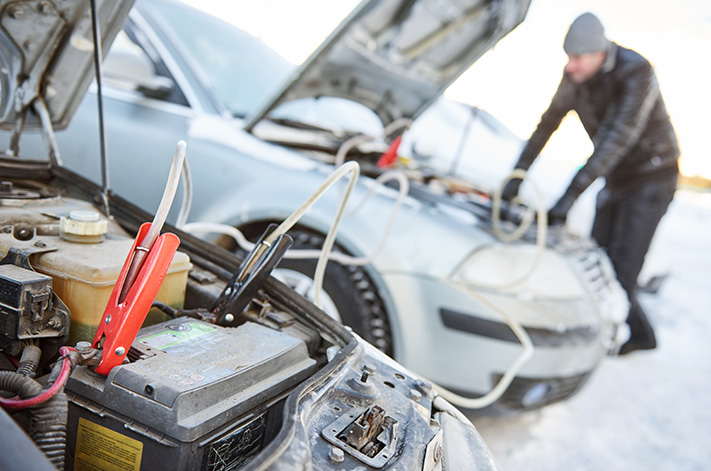
As the mercury sinks in the southern states and winter takes its toll on your car, the battery is one of the components that can be hit hardest. Not only is it working harder with the alternator to keep more vehicle electrical systems going such as lights and heaters, the cooler temperatures can also impact battery capacity and function.
Here are some tell-tale signs that your battery may need replacing but first, a look at how your battery lives and dies.
The underlying design principle of the battery in your car has essentially remained unchanged for more than a century. A number of separate (but electrically connected) cells contain lead plates which are submerged in a strong liquid or gel acid (most commonly sulphuric).
A reaction between the metal and acid called electrolysis produces electricity when needed, while a reversal of the reaction recharges the battery when the engine’s alternator is producing more charge than the various electrical systems need.
Over time, the lead plates are eroded or calcified by many charge and discharge cycles, while abuse or repeated flattening of the battery can warp or deform the plates which will cause the failure of one or multiple cells.
That’s the key point here. Because of the modular design of a battery, it is more likely to fail progressively and not suddenly so spotting the first signs will allow you to act before you are left with a dead battery.
One of the most obvious ways to tell that your battery is losing punch, and a symptom you might notice without prompting, is a slower engine cranking speed when starting from cold.
The symptom is often more noticeable when the engine is cold and during cooler weather which slows the reaction inside the battery and lowers power output. Cranking the engine is the largest normal load on a battery by a long way so this is when most degradation becomes apparent first.
A slow engine crank is not by any means exclusively caused by a failing battery and can be the result of low charge or more viscous engine and transmission oil that is harder to pump when cold. If your battery is healthy but low on charge, it is important to find out why.
Headlights are another major consumer of electricity and can be used to test an underperforming battery. Switch on the full beam headlights and without the engine running and observe their brightness. Then start the engine and check the lights again. There should be only a minor difference if any in the brightness. If there is a big difference, this could again indicate an unhappy battery or low charge level.

In more modern vehicles, sophisticated electrical system management computers monitor the battery level and are capable of a clever charge preservation trick that can offer a clue when something isn’t 100 per cent.
If the system detects that the charge is getting low, the most advanced systems will progressively shut down non-essential electrical functions such as central locking or the radio to reserve battery power for the most important roles including engine starting.
If you find that one or more electrical systems mysteriously stops working but then reactivates once the car has started this could offer another early warning.
All of the above symptoms can be caused by a low battery charge which may be a result of another problem such as a ‘leak’ where a small electrical component is draining the battery over time, or a failing alternator, which does not top up the charge sufficiently. So how can you tell the difference?
When it comes to diagnosing charge system faults there are two essential tools and the most readily available of these is a simple multimeter, which can be used to measure battery voltage if you are confident using the device.
Most passenger vehicle electrical systems are 12-volt which is what a serviceable battery should push out as a minimum with the engine turned off, although 12.6 volts are optimum. When running, that measurement should increase to between 13 and 15 volts.
But this still won’t necessarily give you a definitive answer whether it is the battery that is to fault or something else.
| 8 tips for looking after your battery
If you are still in doubt, you will need to enlist the help of a mechanic who will most likely use a heavy discharge tester or a more accurate electronic load tester which can gauge whether your battery is performing as it should under heavy demand.
If you are experiencing any of the above early symptoms it might pay to get your car’s electrical system checked out and bear in mind that a good quality battery is expected to last a minimum of four or five years depending on its application.




